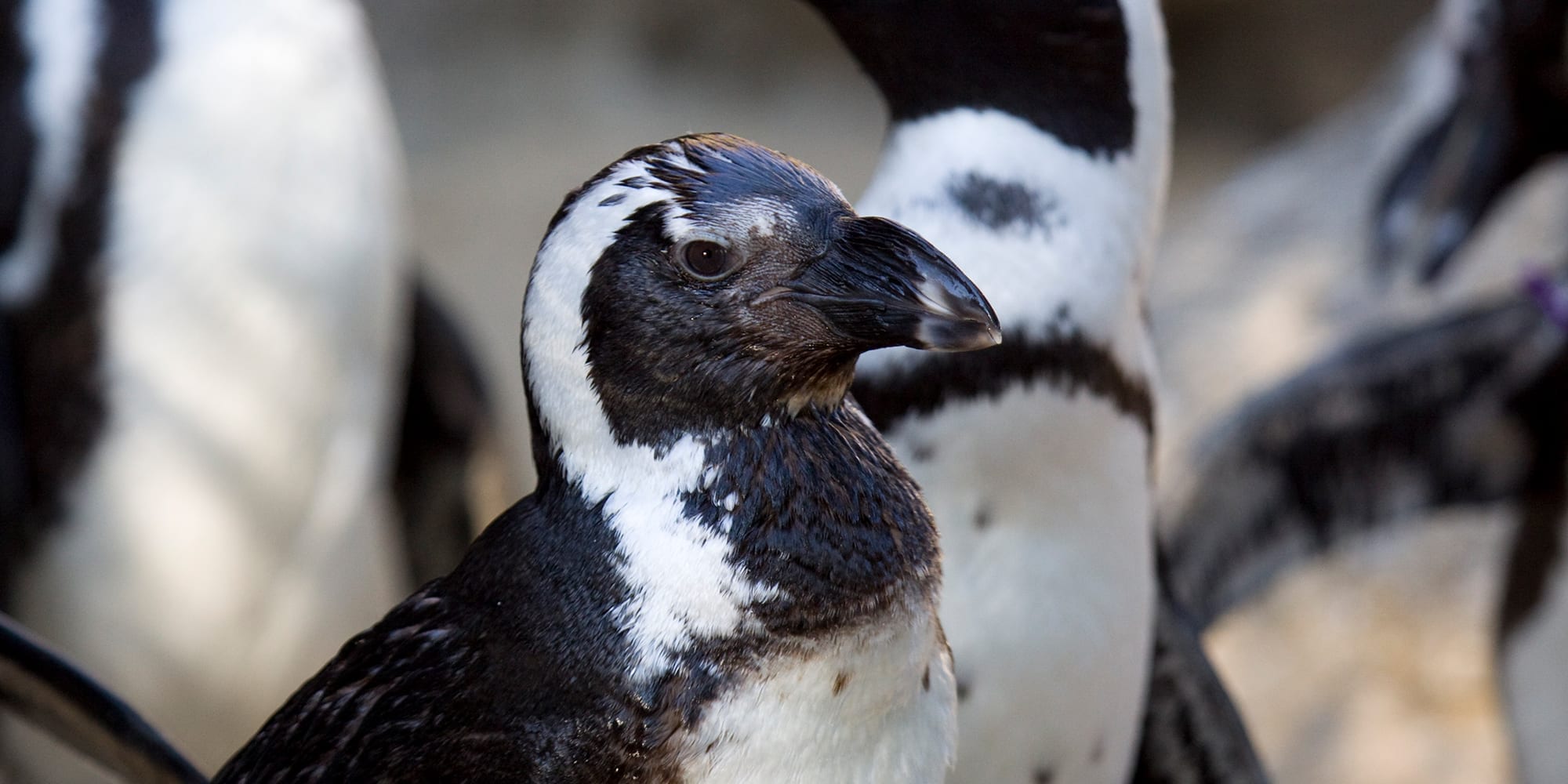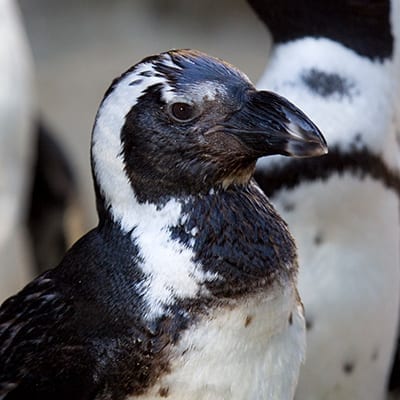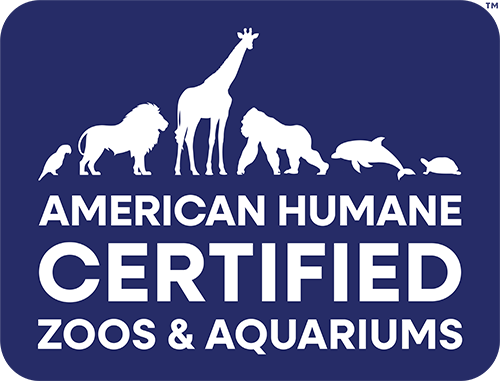Penguins are flightless birds that are built to “fly” through the water. They have streamlined, torpedo-shaped bodies and wings that have been reduced to strong, stiff flippers that help them propel rapidly through the water. They have webbed feet and legs that are set far back on the body, and their legs and tail are used like rudders for steering as they swim. Diving down to catch fish, Humboldt penguins can stay under water for up to 18 minutes and they can swim 11-15 mph.
Classification
| CLASS: | Aves |
| ORDER: | Sphenisciformes |
| FAMILY: | Spheniscidae |
| GENUS: | Spheniscus |
| SPECIES: | humboldti |
Habitat & Range
Open ocean and the rocky shores near cliffs or on islands off the coasts of Chile and Peru.
Humboldt penguins inhabit coastal areas of Chile and Peru.
Location


Adaptations
- Can You See Me Now?
- Despite differences in size, all penguin species have similar coloration, with black feathers on the back and white feathers on the front. This counter-shading is a form of camouflage that is crucial in avoiding predation and catching prey. From above, the dark coloration helps them blend into the blackness of the ocean water, but from below the lighter color helps them blend into the bright surface of the ocean.
- A Fine Feather Coat
- Although Humboldt penguins live in a relatively warm region off the coast of South America, the ocean waters further offshore are cold. The penguins have three layers of short feathers that overlap like shingles on a roof, making them waterproof. They also have a well-defined layer of fat to helps keep them warm. However on shore they can get very hot. They have an extensive area of bare pink skin at the base of their bills that helps them to radiate heat and cool off.
- Flying Through Water
- Penguins are flightless birds that are built to “fly” through the water. They have streamlined, torpedo-shaped bodies and wings that have been reduced to strong, stiff flippers that help them propel rapidly through the water. They have webbed feet and legs that are set far back on the body, and their legs and tail are used like rudders for steering as they swim. Diving down to catch fish, Humboldt penguins can stay under water for up to 18 minutes and they can swim 11-15 mph.
Physical Description
- Humboldt penguins are 25-28 inches (65-72 cm) tall.
- They weigh seven to 13 pounds (3.6-5.8 kg).
- They have black feathers on the back and white feathers on the front with a distinctive U-shaped black band across the front.
- They have a slightly larger bill than other penguins.
- They have splotchy pink patches on their webbed feet and at the base of their bill.
Diet
What Does It Eat?
In the wild:
Smaller fish including anchovies, krill and sardines.
At the zoo:
Fish.
What Eats It?
Leopard seals, fur seals, sea lions, sharks and killer whales prey on adults; eggs and chicks are subject to predation by birds, snakes and foxes.

Social Organization
Humboldt penguins are highly social birds that live in small colonies called rookeries.
Life Cycle
Like all penguins, Humboldt penguins are monogamous and mate for life. Breeding occurs after a brief courtship. Both the male and female dig a burrow in rookery dried guano (bird poop!) and when it’s ready the female lays two eggs. The parents take turns incubating the eggs until they hatch after about 40 days. The chicks are born with grayish brown downy feathers. Both parents feed their young by regurgitating food. The chicks go through their first molt at 70-90 days replacing their downy feathers with grey adult feathers that lack the distinctive black band on the front. With their adult feathers in place they can maintain body temperature and by 12 weeks they fledge and leave the breeding sight to forage for food on their own. Humboldt penguins reach maturity at about two years of age, and will return to their birth-rookery when they are ready to mate. Humboldt penguins can live up to 30 years in captivity.







